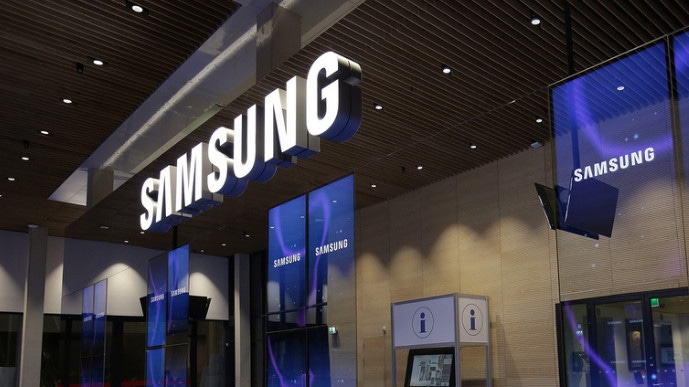Samsung wins Q1 smartphone race as AI kicks in
Samsung and mass-market mobile phone brands led a rebound in the smartphone sector globally in the first quarter of this year, while Apple struggled to keep pace, according to new data published this week.
May 1, 2024

Canalys puts the number of smartphone units sold worldwide at 296.2 million in the three months to the end of January, an increase of 10% year-on-year. That's the first positive double-digit on-year growth figure the market has recorded since early 2021 (see chart below).

The market performed better than expected, the analyst firm said, as it shared its latest smartphone sell-in figures, which has to be good news for the industry as a whole.
The rebound was for the most part driven by smartphone vendors introducing refreshed portfolios and macroeconomic stabilisation in emerging markets, it said.
But while the figures are strong overall, some performed better than others, as is often the case. And in Q1 it was Apple that failed to keep up with the pack.
Admittedly, the iPhone maker still has a market share most would be thrilled with, selling 48.7 million smartphones during the quarter, or 16% of the global total. However, that figure represented a 16% decline on Q1 last year and pushed Apple down to second place in the global ranking behind Samsung. The pair have chopped and changed position many times over the years, so their relative placements don't mean too much, but that sales decline means Apple's market share is the lowest it has been in two and a half years and that has to hurt.
For its part, Samsung had a strong Q1, shipping 60 million units, only a fraction fewer than in the year-ago quarter and equivalent to 20% of the market. But for the South Korean vendor, Q1 was about more than unit shipments.
"Samsung's S24 launch reflects a pivotal moment in its AI and premium strategy, with the potential to reshape the industry," said Canalys Senior Analyst Sanyam Chaurasia.
The analyst noted that Samsung launched its Galaxy S24 a month earlier in the year than it did its predecessor, the S23, and as a result shipped 35% more of the devices; the S24 accounted for 13.5 million of Samsung's quarterly smartphone shipments.
"The pull factor from Galaxy AI, the large scale of retail points elevating the customer experience, and a better time-to-market strategy, drove the strong performance of the Galaxy S24. Beyond empowering Samsung's premium positioning, it also signals a broader shift in the smartphone industry towards AI-driven innovation," Chaurasia said. "Samsung will look to leverage its early momentum by crafting compelling value propositions for users with Galaxy AI; solidifying premium competitiveness and fostering brand stickiness," he predicted.
Indeed, Canalys notes that all device makers will need to explore ways of commercialising generative AI as the year progresses, highlighting the need for strategic partnerships with brands, chipset companies and software providers.
While AI-driven features are currently the preserve of high-end devices, in the long term they will filter down to mid-range phones as vendors look to add users to their native AI ecosystems.
"Additionally, ecosystem expansion via cross-device integration and strategic partnerships boosts revenue potential, highlighting the profound impact of on-device AI on user experiences and brand profitability," Chaurasia said.
AI or otherwise, there has been something of a resurgence in the middle of the market. Canalys points to a strong Q1 for Chinese companies Xiaomi and Transsion; the latter posted 86% year-on-year growth with 28.6 million shipments, propelling it to fourth place in the market and almost doubling its share to 10%. The mid-range phone makers witnessed strong shipments into the Middle East, Africa and Latin America in particular.
But strong demand doesn't necessarily mean low prices. The mid-range vendors are stockpiling raw materials in anticipation of costs going up and will look to pass on the additional costs to end-users where they can, Canalys notes.
Ultimately, whether you're looking to spend big on a high-end smartphone packed with AI-led features, or have more modest aspirations for your smartphone, it doesn't look like prices are coming down any time soon.
About the Author(s)
You May Also Like











_1.jpg?width=300&auto=webp&quality=80&disable=upscale)


.png?width=800&auto=webp&quality=80&disable=upscale)